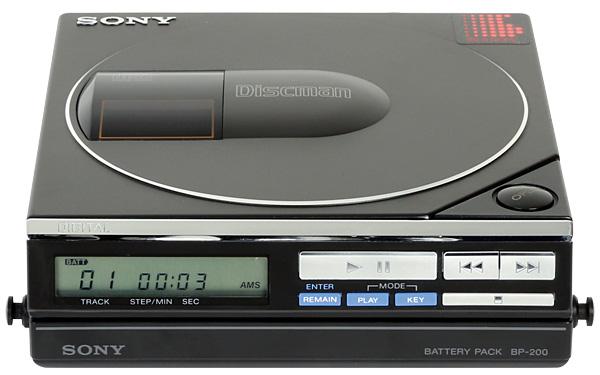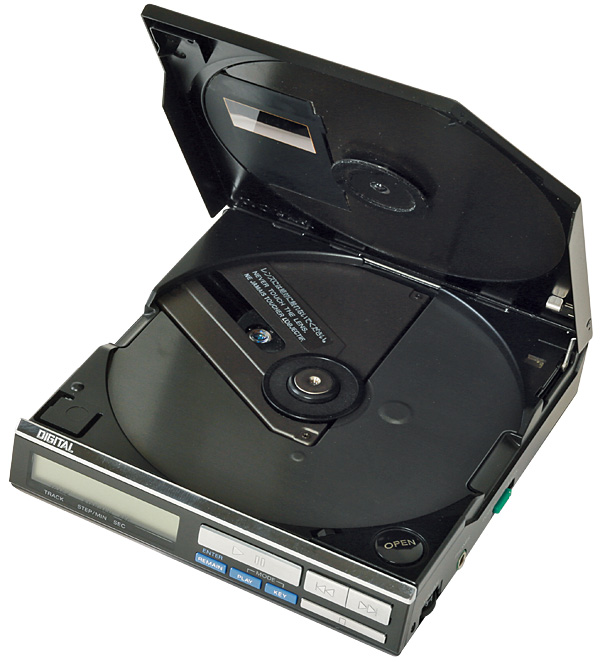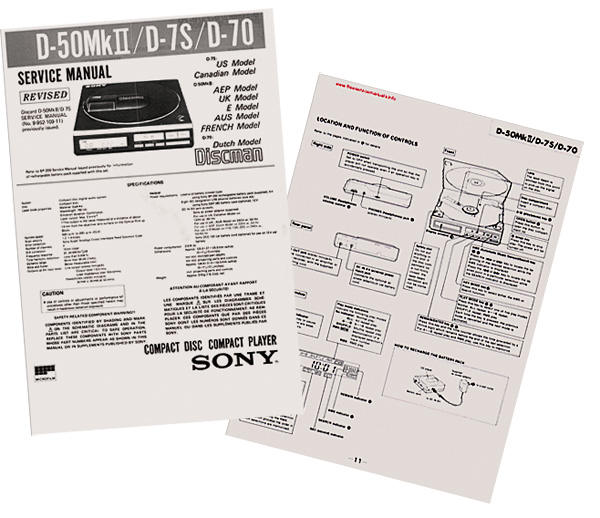Sony Discman (D-50 MkII)

 While first to market with a portable player, Sony soon found itself overtaken by rivals. Its answer was a now-iconic machine, driven by a belt. But how does it sound today?
While first to market with a portable player, Sony soon found itself overtaken by rivals. Its answer was a now-iconic machine, driven by a belt. But how does it sound today?
Sony's original D-50 'Compact Disc Compact Player', released in late 1984, was the first practical portable to reach consumers. Named to commemorate the company's 50th anniversary, the player's ¥50,000 price tag ensured that it dominated the market. However, the fact that it cost ¥100,000 to manufacture meant that this came at some expense to Sony.
Fast forward two years and the industry's other big players had come up with personal models of their own, some of which made the D-50 look outdated. The Technics SL-XP7 was one example, for on its release in late 1985 it could lay claim to being the smallest CD player available. The answer was a new model, and so in 1986 Sony unveiled the D-50 MkII.
Battery Included
While the player's MkII moniker suggested a mild update, in fact almost everything about this second-gen D-50 was new. Size and convenience of use were both targeted in the new design, with improvements in miniature electronic components and battery technology both contributing to the appeal of this latest offering. Without having the market to itself, as was the case with the original when released, the D-50 MkII would never have the impact of its predecessor. However, it represented an important step when it came to the process of transforming the portable CD player from an exotic trinket into a useful everyday object. It was also the first model to bear the now iconic name 'Discman', a word that would soon become ubiquitous for describing Sony's portable players.

The size reduction between the old and new models does not seem that striking at first, but on closer inspection one realises that the D-50 MkII includes beneath it a BP-200 rechargeable battery pack. This means that the unit is ready for mobile use just as it stands. The original Sony D-50 did not include any kind of battery as part of its basic structure. Rather, it had to be fitted to one of the various 'battery case' options offered by the company before it could be used as a portable player.
The BP-200 used lead acid storage cells which employed a similar chemistry to that used in a car battery. Three flat-packed 2V accumulators gave the required 6V to run the player, although the power hungry electronics inside meant that even this specialised component did not last for very long. The BP-200 could be recharged using the AC adapter provided with the player and it was recommended that this be done frequently, even if the battery had only been partially used. Failure to do so quickly could ruin the battery, which was not ideal when it came to a consumer product.
Little Belter
Some of the same LSI (large scale integration) chips used in the original D-50 made it into the MkII version, but the DAC was changed from Sony's own to the popular Burr-Brown PCM55. There was still no digital filter and the single DAC was time-shared between both channels, as was the popular Japanese practice at the time for CD players of all sizes. As with the inaugural D-50 player, there was no room inside for Sony's elaborate analogue filter blocks, which formed a key part of the final stages of its early full-size models. Instead, a simpler arrangement was used, but as was shown with the first D-50 this did not mean that the filtering was not effective.

The KSS-110 laser assembly was also carried over, but things had changed substantially elsewhere in the mechanism. The first D-50 had used a brushless hall-effect motor to turn the disc, like a shrunken version of the one used in the company's full size CDP-101 [HFN Jan '12]. The D-50 MkII, on the other hand, used something that had been seen before, but only outside the digital realm: a conventional DC brush motor and a belt.
Room For Error
The use of belt drive for the D-50 MkII's 'turntable' may be expected by some to have an effect on the quality of the sound the machine produces, but due to the way in which CD players operate the effect is marginal at best. To play a CD, a process called 'error correction' is required. Data recovery from the disc can never be perfect, indeed it is by no means certain that the information recorded on the disc is correct down to the last '0' or '1', even under ideal conditions. Error correction is a complex process, but to function it requires a small amount of computer memory through which all the digital signals from a disc must pass as it is played.
In all players, the speed of the disc is regulated so that the memory is always kept topped up with incoming data. Error-corrected representations of the music signal emerge at the other end, their rate set not by the disc speed but by the quartz-locked electronics of the player. It is this separation of mechanical stability and replay accuracy that enabled the CD format to achieve wow and flutter performance that was immeasurable by the standards of analogue equipment.
It can be argued that as long as the disc-rotating mechanism is able to keep the electronic memory in the player topped up and that its actions do not create electrical disturbances that interfere with the operation of other circuits, any further refinements to its construction and technique have no effect on the performance of the player as a whole. This does not mean that there were no advantages to the adoption of the belt-driven mechanism in the new Sony machine. The gearing that was made possible by making each of the pulleys a different size meant that a high speed, low-torque motor could be used, and this was a much smaller component than the conventional type of the era. Furthermore, the motor could be placed away from the centre of the disc, an advantage when it came to dividing up the precious real estate inside the tiny machine.

Vertical Play
Finally, the design of the centre bearing could be optimised for its purpose, including measures to limit the vertical play present when the disc is spinning. This helped to keep the distance from the laser's lens to the disc surface constant, even when the player was being carried. True, skipping and jumping remained an issue, as it was with all early CD portables, but the D-50 MkII's sturdy centre bearing certainly helped to minimise this.
The Sony D-50 MkII was soon joined in the range by the D-77 (or D-55T, as it was known in some markets). This was essentially the same player but with a simple AM/FM tuner built into the lid. Although this provided a source of entertainment with a much greater run time from the same battery reserves than did listening to a CD, this bulkier variant did not prove popular. The D-50 MkII itself was then pushed aside a year later by the launch of the even slimmer D-100 (D-10 in some markets), which signalled the end of the D-50 series.
























































